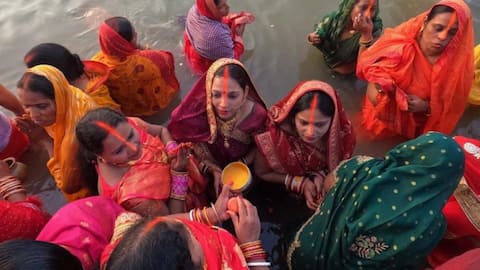Chhath Puja: How women shape the rituals and cultural legacy
What's the story
Chhath Puja is predominantly celebrated in the Indian states of Bihar, Jharkhand, Uttar Pradesh, and parts of Nepal. Women play a pivotal role in the festival, being deeply involved in all aspects of the rituals and preparations. Let us delve into how their significance during Chhath Puja stems from their central and integral participation in every part of the celebration.
Nurturers
The spiritual connect
Chhath Puja highlights the nurturing aspect of divine feminine energy, embodied by Chhathi Maiya. Women, as representations of this nurturing force, play a vital role in the celebrations, symbolizing the connection between the divine and earthly realms. Their participation reflects the spiritual bond that ties together family, tradition, and devotion during this sacred festival.
Traditions
Guardians of cultural continuity
Through their active participation in Chhath Puja, women ensure the continuity of cultural traditions. They pass down knowledge of the rituals, songs, and customs to the younger generations, instilling in them the values of discipline and reverence for the Sun. In this way, women act as the cultural torchbearers, preserving the essence of the festival for the future.
Custodians
The stewards of rituals
Women are the primary custodians of the Chhath Puja rituals. From the early morning of the festival, they begin preparations with meticulous care, ensuring that every step aligns with tradition. Their involvement in rituals like the Kosi (fasting) and Arghya (offering to the Sun) highlights the importance of women in maintaining the sanctity and authenticity of the puja.
Prasad
Preparation of prasad
Women take charge of preparing the traditional offerings or prasad for Chhath Puja, including items such as rice pudding (kheer), which are offered to the Sun God during the rituals. This sacred task requires immense dedication and attention to detail, reflecting their deep commitment to the festival. Through this act, women strengthen their spiritual connection and ensure the authenticity of the rituals.
